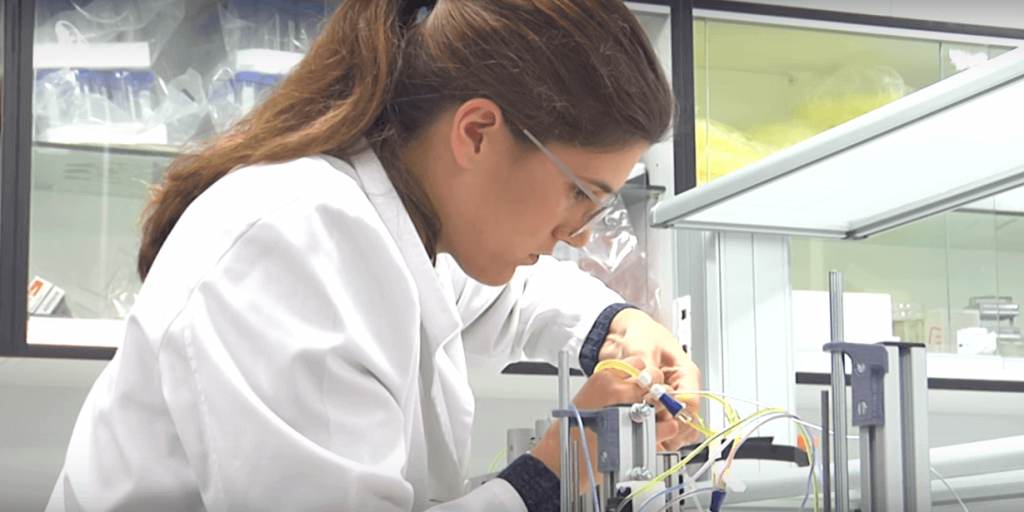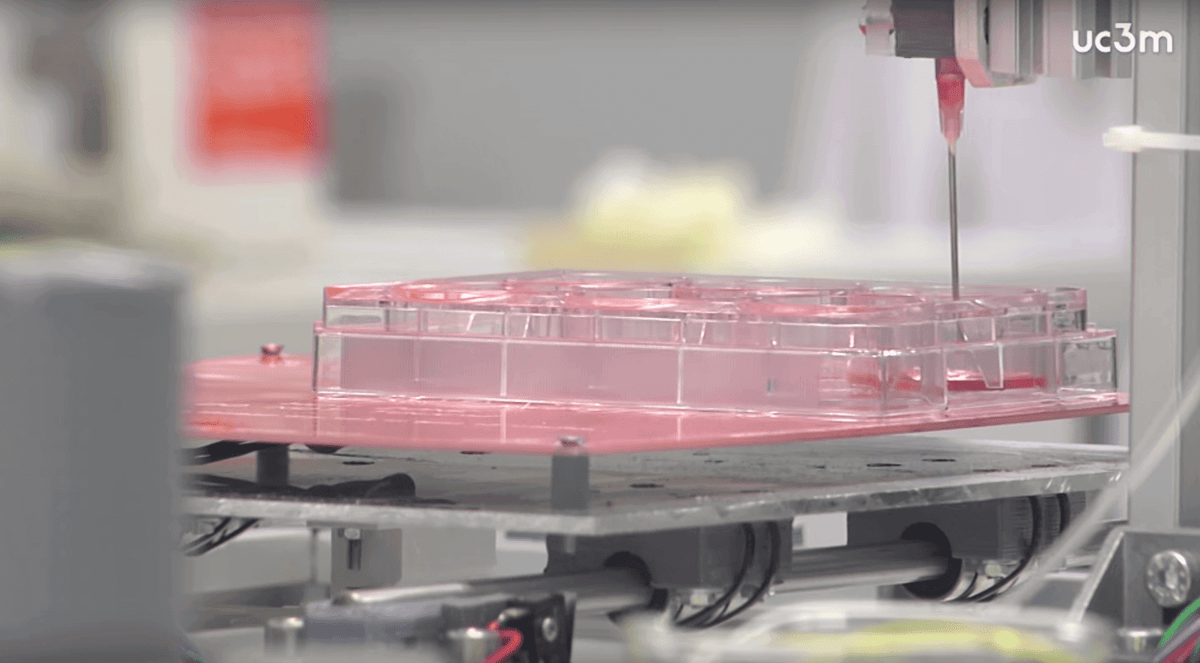Spanish scientists have developed a 3D bioprinter which can print sheets of functional human skin for use in research or even transplants.
A team of scientists at Carlos III University in Madrid created a 3D bioprinter which is reportedly capable of printing sheets of human skin.
If this is true, painful skin grafts taken from a person’s body may be eliminated completely. Research on human skin and transplants will be performed in a novel way. If this works out well, there will also be no reason for testing cosmetics on animals.
However, right now there is very little detail available about how their bioprinter actually works. Supposedly, it uses bio-inks which are made up of a mixture of biological components, proteins, plasma and skin cells. A computer then precisely deposits the bio-inks on a print bed – much like your regular 3D printer. According to the team, the generated skin was very similar to human skin and, furthermore, it was indistinguishable from bilayered dermo-epidermal equivalents, handmade in our laboratories.
Researcher Juan Francisco del Cañizo explains: “Knowing how to mix the biological components, in what conditions to work with them so that the cells don’t deteriorate, and how to correctly deposit the product is critical to the system.”
Bioprinters Can Greatly Advance Medicine Research and Treatment
Reportedly, the printer can produce skin which has an outer layer, or epidermis. This provides protection from outside elements. The printer also produces a thicker and deeper layer, the dermis. This is made up of fibroblasts that produce collagen which gives skin strength and elasticity.
Uses of 3D printed skin could include testing cosmetics and pharmaceuticals or providing transplants. For research, scientists can use any human skin cells to create the skin sheets. However, for transplants, a patient’s own cells are required.
First, the researchers grow the cells in a lab which takes around two weeks. The printing then takes between one and two days. The research team was able to generate 100 cm2, a standard P100 tissue culture plate, of printed skin in less than 35 min (including the 30 min required for fibrin gelation).
Already, Carlos III University has teamed up with bioengineering firm BioDan Group. The reason for this pairing is that they’re hoping to commercialize the technology.
Alfredo Brisac, CEO of BioDan Group, said: “This method of bioprinting allows skin to be generated in a standardized, automated way, and the process is less expensive than manual production.”
Interested in finding out more? You can read a paper on the research in the online edition of the journal Biofabrication.
This appears to be the future of transplants and researching – it’s certainly more ethical than testing on animals. Researchers at the University of Toronto are also developing a similar bioprinter.
Source: The Engineer

License: The text of "Scientists Develop a 3D Bioprinter that Prints Human Skin" by All3DP is licensed under a Creative Commons Attribution 4.0 International License.

